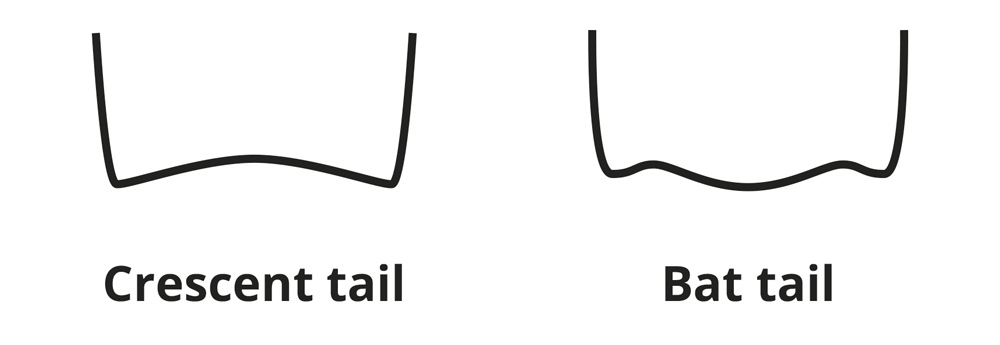Purchasing a Bodyboard

Once you've made the decision to obtain a bodyboard, there are several factors to weigh. Here, you will find a clear and organised guide to the key attributes to consider.
1. Selecting the Core
The core essentially forms the fundamental material constituting the board’s body. It is comprised of foam, with three variations available—ESP, PE, and PP. Each variation possesses distinct traits concerning water temperature, wave size, rider's proportions, and proficiency level, among other aspects. Below lies a brief rundown of these three types.
ESP - Expanded polystyrene
- Enables diverse shapes, styles, and distinct flex patterns
- Offers substantial cushioning for elbows and hips
- More affordable than PE and PP
- Ideal for novices
- Excellent buoyancy and very light
- Less durable compared to PE and PP, so seek a thickness of around 50-55 mm for added strength
PE - Polyethylene
- The original and most prevalent core for bodyboards
- Flexibility with nearly immediate response to the rider
- Grants better control
- Superior performance in cooler waters
- Suited for larger waves
PP - Polypropylene
- Superb all-round board
- More rigid than PE yet still light and robust
- Totally resistant to water
- Performs well in warmer waters and conditions
- Exceptional for large waves and intricate manoeuvres
- Beaded PP augments flex and buoyancy
- Extruded PP enhances rigidity and speed
When discussing flex, this implies the degree to which the board curves under external forces like waves and how it subsequently rebounds. A board with greater flex responds more to the water conditions. Contrarily, boards with reduced flex are noted for being stiffer but quicker.
2. Selecting the Slicks (Skins)
Slicks, also called skins, are the materials enveloping the underside of the board, making direct contact with water. Two types of slicks exist: Surlyn Slicks and HDPE Slicks:
- HDPE slicks denote high-density polyethylene slicks, a durable material with low resistance, thus increasing speed. Generally the less pricey option compared to Surlyn and primarily found on beginner boards.
- Surlyn slicks provide a rubber-like finish, optimising responsiveness and flexibility as they can revert to their original form after impact. Favoured by bodyboarders for its superior performance, Surlyn is pricier than HDPE.
3. Selecting the Deck
The deck refers to the upper section of the board where you lay your body while riding the waves. There are three options to choose from: PE, XPE and IXPE. Below is a table for comparison:
PE - Polyethylene
- Excellent cushioning for the rider
- Prone to dents as it doesn't revert to its original form
- Soft and flexible
XPE - Cross-linked, closed-cell
- Exceptional water resistance due to its closed structure
- Smooth finish, but requires additional wax for grip
- Stiffer sensation compared to PE and IXPE
IXPE - Cross-linked, open-cell
- Less likely to compromise the board's flex and recoil
- Extra rigidity and robust strength due to higher density
- Softer than XPE with a coarser feel for superior grip
The deck choice largely hinges on individual preference and preferred riding style—whether opting for a softer feel, a sleeker aesthetic, or a deck that is more durable and resistant to creasing, the decision is yours.
4. Selecting the Tail Shape
Bodyboards chiefly offer two tail shape options, with multiple variations. Both suit any rider level and are influenced primarily by personal preferences and riding conditions.

- Crescent tail performs well in all-round conditions, providing solid grip on the wave, and allows riders to position their hips comfortably to catch waves or paddle out.
- Bat tail is preferred for weaker surf and unpredictable waves due to enhanced buoyancy, also making it a better choice for heavier riders. More speed can be achieved due to this buoyancy, although it may deliver a looser sensation at the board's rear.
5. Selecting the Size
Selecting the correct board size is vital for bodyboards. In addition to height, your chosen size is also dependent on the type of waves you intend to ride. For larger waves, a smaller board allows greater control and manoeuvrability. However, in calmer conditions, a larger board's buoyancy proves beneficial.
That said, it’s imperative to ensure the board matches your height and weight! A board that is excessively lengthy could cause your knees to strike the tail during fin-powered paddling. Conversely, a board that's too small will lack sufficient buoyancy. To adjust buoyancy without compromising board length, you might select a board with a different width.
To determine the appropriate board size, measure:
- The distance from the ground to your belly button;
- The span from your chin to your knees;
These two measurements might not be identical but are relatively close, providing a useful gauge for determining a suitable board length.
6. Fins/Flippers: An Essential Consideration
When engaging in bodyboarding, fins or flippers transcend being mere accessories and become a necessity. Fins specifically crafted for bodyboarding differ from regular swim fins. Typically, bodyboarding fins are shorter, wider, and firmer, facilitating fast acceleration for wave-riding and seamless manoeuvring without the flippers becoming obstructive.
While numerous variations exist, in terms of materials and shapes, the most crucial aspect is obtaining fins tailored for bodyboarding that are comfortable and fit your feet well.
Prepare to Bodyboard!
Armed with the fundamental considerations for selecting a board, you can proceed to find the ideal board for you. Rest assured, more questions and information will surface, so if uncertain, feel free to contact us.
